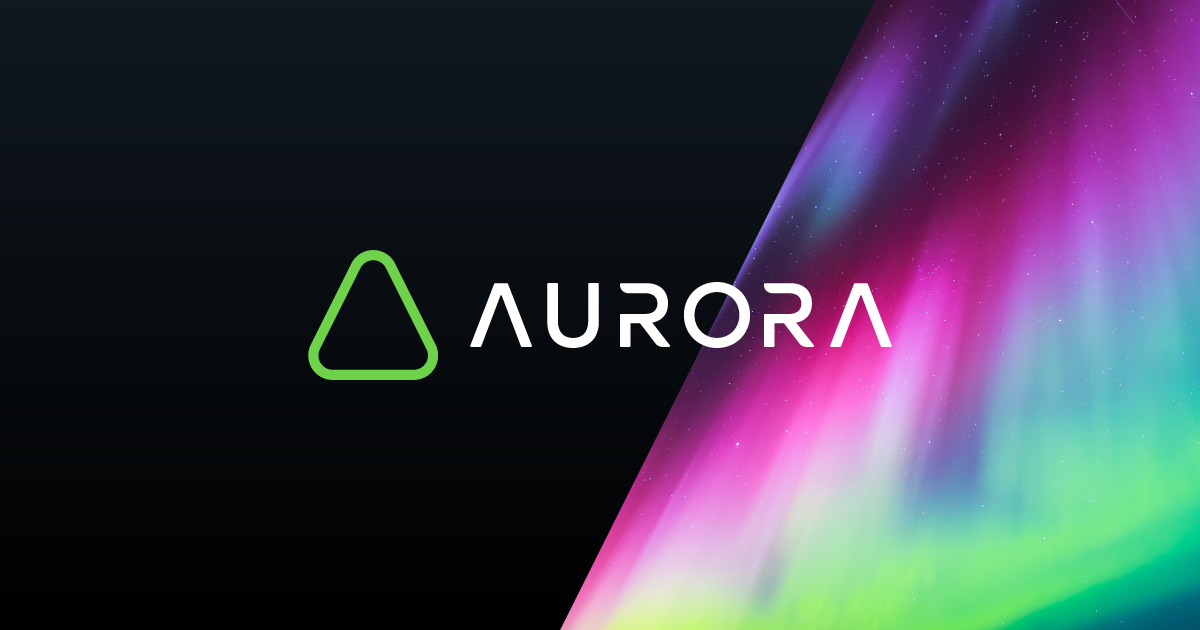Aurora has launched an original Ethereum Layer-2 protocol that offers users and developers the classic Ethereum experience in addition to the NEAR protocol, a blockchain-based scalable development platform like no other. Unlike many other blockchains in the crypto space, NEAR is not just a mere copycat of Ethereum’s blockchain.
NEAR has quite a lot of tricks upon its sleeves, such as a side chain that features full Ethereum Virtual Machine (EVM) compatibility, a robust cross-chain bridge, and an almost a billion-dollar incentive program. The EVM compatibility is pretty much a big deal since it’s the turn-key solution for adoption.
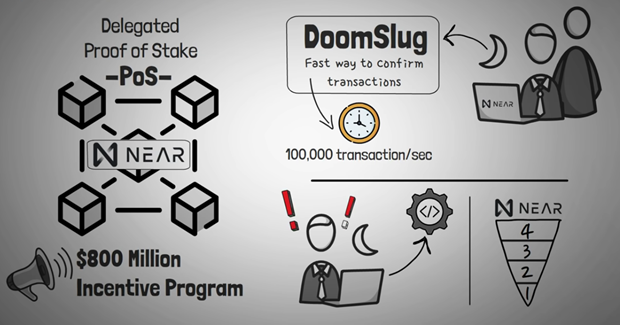
NEAR Protocol Overview
The NEAR protocol network has been at work for years utilizing a selected proof-of-stake (PoS) mechanism to verify new transactions in the blockchain. Coupled with this method is a new brilliant idea coined DoomSlug, which serves as a fast way to validate transactions with a quick finality and a sharding tool that can process about a hundred thousand transactions every second.
Among the best things that you can see in the NEAR protocol is its DAO-like setup, having organizations or groups of people working on specific aspects of NEAR. This means that people within the community have the power to make a change or contribute if they want to.
Furthermore, NEAR declared a hefty 800-million incentive program for users. The incentive program would make headlines, especially when DeFi applications (Dapps) begin moving over and launches start rolling.
The NEAR protocol is built from the ground up. Hence, developers need to start from zero when designing applications, but developers discovered a simpler solution that doesn’t require them to begin from scratch— it’s to build up a subnet that can run Ethereum applications on EVM. This subnetwork is what’s known as Aurora.
What is an EVM?
Ethereum Virtual Machine (EVM) essentially represents Aurora. Technically, it is the very code the runs Ethereum and its smart contracts. Plenty of blockchain projects out in the market has been drafted through this code, adding some twist into it, then called it their “own” blockchain, pretty much like code paraphrasing.
To mention a few, there’s Polygon, Binance Smart Chain, and XDI. Aurora follows the steps of the latterly mentioned names since developers aren’t much inclined to create projects for up-and-coming blockchains but rather desire to develop something for a massive and famous blockchain.
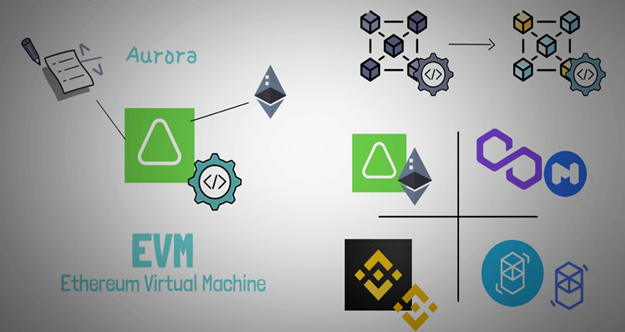
When creating a decentralized application for any EVM blockchain, developers can quickly move codes to another network. For instance, AAVEE is a decentralized application on Ethereum, while Geist is nearly the same decentralized app (Dapp) on the Phantom network. Another Dapp on the Ethereum is compound, while Cream is just about the same Dapp on Binance Smart Chain.
Different blockchains employ their own coin and utilize various tokenomics to support their network. Aurora uses Ethereum as its native coin, while the Polygon network utilizes Matic. The Binance Smart Chain employs BNB, and the Phantom Network operates FTM.
However, Aurora believes they don’t need their own coin and don’t even utilize the NEAR coin, which was a pretty big and bold move.
Aurora TPS/ Block Time/Consensus Mechanism
With Aurora, Ethereum enthusiasts can use familiar applications while benefiting from the efficiency that NEAR offers, minimizing the financial barrier of entry for developers and consumers.
Aurora stays away from mounting expenses by capping gas fees to ensure they won’t continue to rise continually. This results in low-cost transactions of a few cents on average. Along with reduced expenses are the speedy transactions completed in a maximum of two seconds.
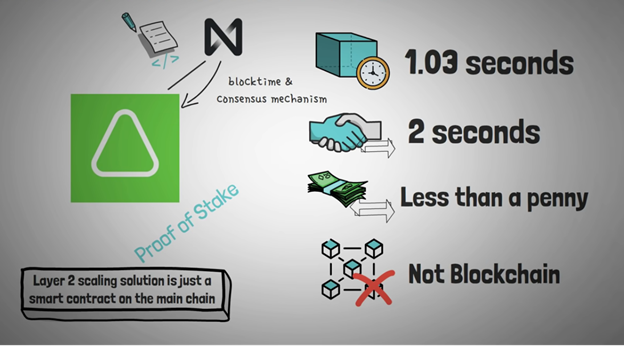
The range block time of Aurora is about 1.03 seconds to 2 seconds, which, compared to others, is very fast. The best part? There is little to no gas fee as a gesture of goodwill to early adopters. Transactions cost about less than a penny and through the NEAR protocol.
Just to set things straight, Aurora itself is not a blockchain but merely a smart contract under the NEAR protocol. Thus, it only employs its block time and consensus from the NEAR network. This concept is fresh in the crypto space, and no other network runs and attempts like this.
The Layer 2 solution is just simply a smart contract along the main chain. On the contrary to other side chains, Aurora makes no attempt to validate blocks off-chain. Validations take place on the actual Ethereum and the NEAR blockchains. Consequently, Ethereum and NEAR blockchain consensus mechanism is the only thing to trust for security, making Aurora trustless and decentralized.
Aurora basically works on top of the NEAR protocol, yet it offers an Ethereum experience for developers. Aurora allows the deployment of Solidity contracts written on Ethereum with no changes, and the consumers can make use of MetaMask and other Ethereum wallets to access these applications.
Since Aurora is just a smart contract, the development team doesn’t need to take care of the storage, consensus, validators, nor keep track of the network. Hence, they can go over again and deploy new features fiercely fast.
Aurora Decentralized Autonomous Organization
A decentralized autonomous organization (DAO) is essentially an organization where token holders decide arrangements instead of having one super authority to like CEOs to make choices. All token holders possess the power to propose and vote on new ideas or changes, which is the primary method to advance Aurora.
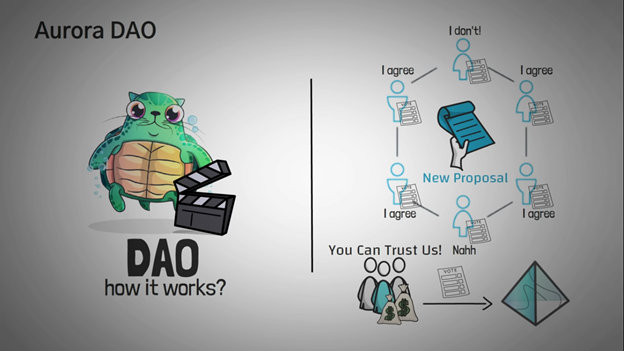
Holding Aurora token allows users to partake in decentralized controlling processes. What makes DAO enticing to investors is that it gives them the authority to decide on significant changes, benefitting all equally.
The Rainbow Bridge
It’s no secret that interoperability— the ability to connect blockchains— is among the biggest problems in cryptocurrencies. However, Aurora has its own rainbow bridge that allows the transfer of coins from Aurora to other NEAR networks, allowing users to transfer funds from the Ethereum blockchain to the NEAR blockchain without needing a third party since the transfer is all done through code.
Another good thing about NEAR is that it utilizes browsers rather than just MetaMask, so there’s no need to download crypto wallets. Moreover, instead of using a complicated string of pseudorandom letters and numbers as a wallet address, it employs human-readable addresses.

